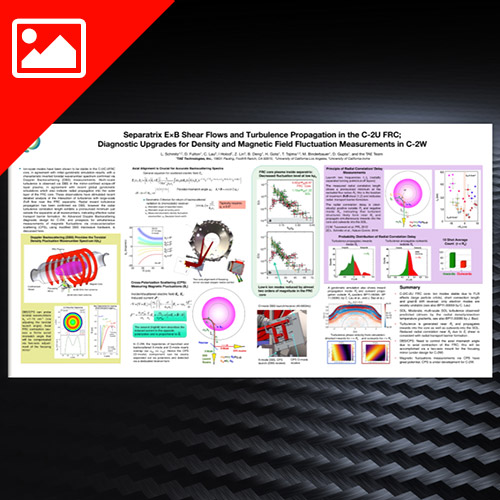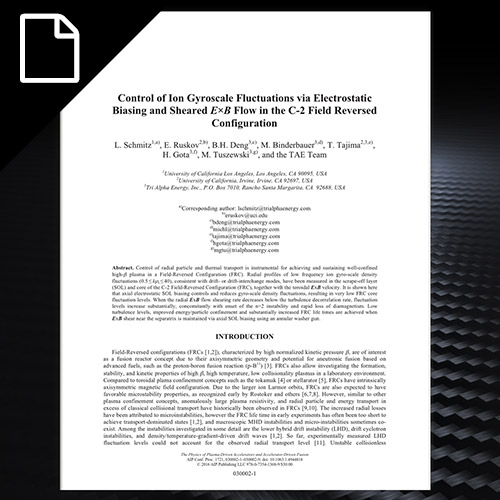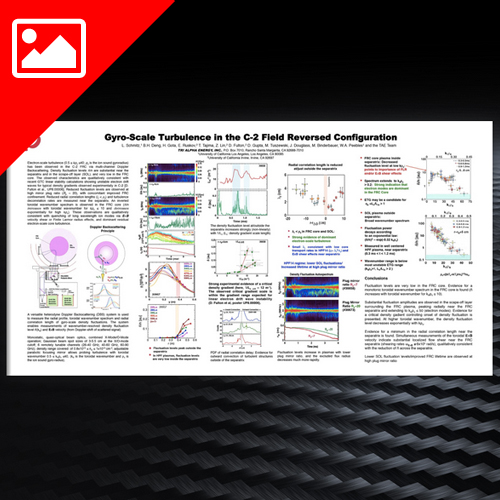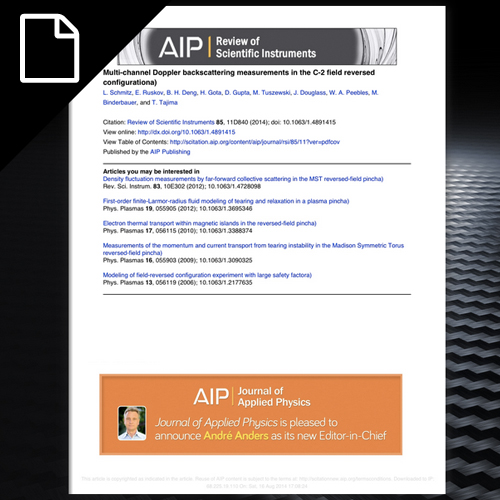
Oct 2017 | Research Library, Posters, Diagnostics, Experiment, Fusion Energy, Fusion Research, Fusion Science, Fusion Technology, Plasma Profiles, Plasma Research, Turbulence
October 2017 | L. Schmitz | APS-DPP | Poster
Ion-scale modes have been shown to be stable in the C-2/C-2FRC core, in agreement with initial gyrokinetic simulation results, with a characteristic inverted toroidal wavenumber spectrum confirmed via Doppler Backscattering (DBS) measurements.

Dec 2016 | Research Library, Papers, Diagnostics, Edge Control, Experiment, Fusion Energy, Fusion Research, Fusion Science, Fusion Technology, Stability, Transport, Turbulence
December 2016 | L. Schmitz | Nature Communications | Paper
An economic magnetic fusion reactor favours a high ratio of plasma kinetic pressure to magnetic pressure in a well-confined, hot plasma with low thermal losses across the confining magnetic field.

Mar 2016 | Research Library, Papers, Diagnostics, Edge Control, Experiment, Fusion Energy, Fusion Research, Fusion Science, Fusion Technology, Stability, Transport, Turbulence
March 2016 | L. Schmitz | AIP Conference Proceedings | Paper
Control of radial particle and thermal transport is instrumental for achieving and sustaining well-confined high-β plasma in a Field-Reversed Configuration (FRC). Radial profiles of low frequency ion gyro-scale density fluctuations (0.5 ≤ kρs ≤ 40), consistent with drift- or drift-interchange modes, have been measured in the scrape-off layer (SOL) and core of the C-2 Field-Reversed Configuration (FRC), together with the toroidal ExB velocity.

Oct 2014 | Posters, Experiment, Fusion Energy, Fusion Research, Fusion Science, Fusion Technology, Plasma Research, Research Library, Turbulence
October 2014 | L. Schmitz | APS-DPP | Poster
Electron-scale turbulence has been observed in the C-2 FRC multi-channel Doppler Backscattering.

Aug 2014 | Papers, Experiment, Fusion Energy, Fusion Research, Fusion Science, Fusion Technology, Plasma Research, Research Library, Turbulence
August 2014 | L. Schmitz | Review of Scientific Instruments | Paper
A versatile heterodyne Doppler Backscattering (DBS) system is used to measure density fluctuation levels (in the wavenumber range kρs ≤ 50), and the toroidal E × B flow velocity in the C-2 Field-Reversed Configuration (FRC).



